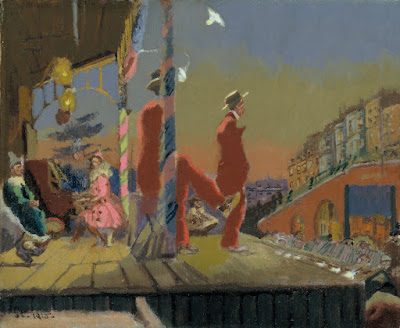WALTER SICKERT at the TATE BRITAIN on TUESDAY 26th April 2022

WALTER SICKERT at the TATE BRITAIN on TUESDAY 26 th April 2022 Brighton Pierrots by Walter Sickert, 1915 Walter Sickert was born in Munich in 1860 and eight years later travelled with his family to London. His father was also an artist, indeed Sickert began his career by imitating his father’s work. Sickert initially trained as an actor, indeed fascination with the theatre is in evidence throughout his career. Sickert trained at the Slade School of Fine Art before working as an assistant to established artist James Abbott McNeill Whistler (1834-1903) in 1882. Walter Sickert, Self-Portrait 1896 Sickert adopted Whistler’s signature style of muted tones and dull, realist colours. However, by 1885 Sickert had met French artist Edgar Degas (1834-1917). He began to follow Degas’s meticulous preparation which included a planning grid and bolder use of colour. This can be observed in works like Shop Front, The Laundry (1885, pencil, pen, and ink on paper) and The Red Sho


%20DACS,%202021.jpg)
